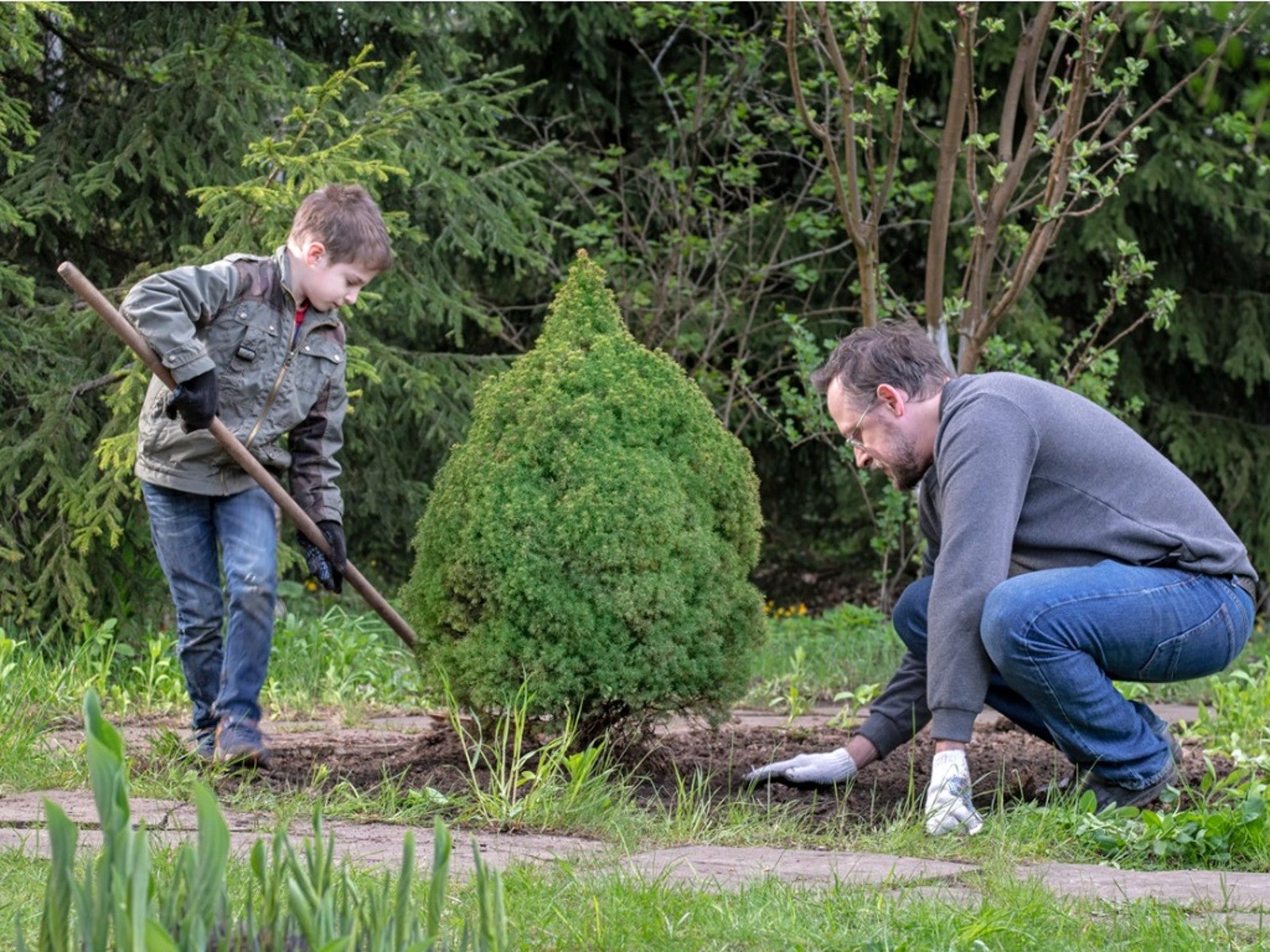Transplanting Large Evergreen Trees And Shrubs


Nobody is happy to discover a large evergreen tree or shrub must be moved from its current location. Transplanting large evergreen trees is not only a massive undertaking but also a big risk to the life of the tree.
But sometimes people miscalculate, or their lives change, and the tree or shrub turns out to be growing in an inconvenient place. Here are some tips about how to help the tree survive a transplant.
Evergreen vs. Deciduous Transplant
Trying to transplant an evergreen tree is more difficult than moving a deciduous tree. That’s because evergreens hold onto their leaves or needles all year long. That means that the trees will be bulkier and heavier than a deciduous tree of a similar height.
The best time to move a deciduous tree is either spring or fall. But the best time to transplant evergreen trees are early spring or late summer/early fall, between the last weeks of August through the first weeks in September.
How to Transplant an Evergreen Tree
The procedure for transplanting an evergreen tree or shrub starts with wetting down the soil a few days before the move. It reduces the chances that the plant will die of transplant shock. It also makes it easier to move evergreens with large root balls. The root ball radius should be about 8 to 12 inches (20 to 30 cm.) for each inch of trunk diameter at chest height.
Dig a trench around the tree that is 18 to 24 inches (45.7 to 61 cm.) deep, then extend the trench under the tree roots to complete the bottom of the root ball. Push the root ball to one side, then position a piece of burlap in the trench on the other side. Roll the root call onto the burlap. Then wrap the burlap around the root ball and tie it in place. Transfer the tree to its new location by carrying the root ball. Replant in its new location as soon as possible.
Transplanting Large Evergreen Trees
While this procedure works well when you need to transplant evergreen shrubs, it gets harder as the plant is bigger. If you are looking at transplanting mature trees, it’s best to call in a professional to do the job. The root ball will be huge and heavy, and difficult to work with.
Sign up for the Gardening Know How newsletter today and receive a free copy of our e-book "How to Grow Delicious Tomatoes".
The mature evergreen should be root-pruned well before the move. This encourages the tree to develop new feeder roots that can be moved with the tree and helps prevent death from transplant shock.
To root prune, mark a circle the size of the desired root ball around the evergreen, then dig a trench along the circle with a sharp hoe, cutting through the current roots. The trench should go down as far as the root ball will be deep. Then backfill the trench and water the area.
When to root prune? Do it in March for a tree to be moved in early fall, in October for a tree to be moved in spring.

Teo Spengler is a master gardener and a docent at the San Francisco Botanical Garden, where she hosts public tours. She has studied horticulture and written about nature, trees, plants, and gardening for more than two decades, following a career as an attorney and legal writer. Her extended family includes some 30 houseplants and hundreds of outdoor plants, including 250 trees, which are her main passion. Spengler currently splits her life between San Francisco and the French Basque Country, though she was raised in Alaska, giving her experience of gardening in a range of climates.